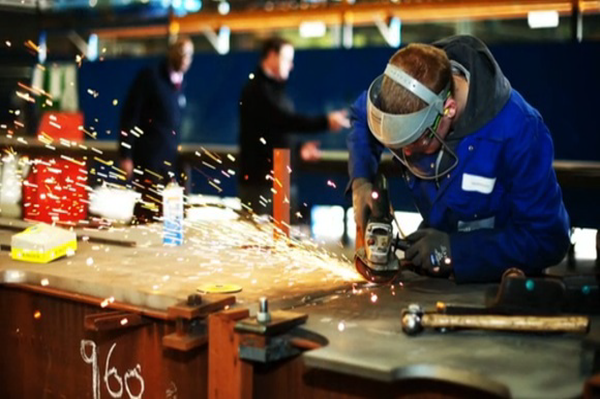The first Industrial Revolution started in Britain sometime around the end of the 18th century when textile manufacturers began to use large machinery to do the same kinds of jobs that had once been done by hundreds of separate weavers working alone. An economy built around this sort of work required a high degree of centralization and also standardization as companies sought to maintain a uniform standard among their products. Until relatively late in the 20th century it was thought that most things would only become more centralized as technology improved and businesses sought after greater efficiencies.
By the later part of the 20th century, however, industry began to fade into the background of the world economy. The efficiencies that had been gained through previous industrial innovations allowed manufacturers to make more products with far fewer workers and in less time. For this reason industry was no longer the major driver of either jobs or economic growth. Smaller firms that specialized in service products and other niches became the focus of most economists and policy makers.
Digital devices, such as home computers and cellphones, are now the major consumer products of the 21st century. Though these products are still manufactured in centralized facilities, it is much more the software that’s run on the machinery that’s important. A billion dollar software company can be created by a group of a few people working at separate locations who may never even meet each other.
The older industrial method of growing an economy would seem to have been left behind by this new more nimble version of capitalism. Appearances have proven deceiving in the past, however, and new advances in technology may yet return industrial manufacturing to a place of prominence in the world’s economy. By combining recent advances in digital technology with new methods of manufacturing businesses may well be on the verge of creating a new Industrial Revolution.
If standardization and centralization defined the older form of industrial manufacturing it will be customization that defines the new one. Rather than creating products made from separate standardized parts, new forms of manufacturing can create products from the ground up that cater to each individual customer’s wishes. Consumers have come to expect personalized experiences and manufacturers are starting to gain the means to make that possible with almost any product. They are using everything from computer technology to high tech and customizable labeling systems, like the ones at http://universal1.com/, to create products that both look great and work the way their customers demand – and at high quantities.
3d printing is the most promising method of the new manufacturing revolution. A 3d printer creates objects by building them layer by layer out of a given material such as metal or plastic. Working with a computer a designer can create an object and then almost instantaneously see it realized in real life. This might sound like the stuff of science fiction but major manufacturers such as Boeing already use 3d printing to make some of their parts. Once the technology has been refined it won’t be unreasonable to expect most people to own their own 3d printers that they can use to make their own products at home.
Supply has always been an issue in any economy and the delay that most businesses experience when they have to wait for the part that they need or the machine inevitably hurts economic growth. By allowing for the quick creation of customized products new methods of manufacturing should significantly improve economic efficiency.
New materials are also on the way that are more amenable to customization methods while at the same time being more durable. Nanomaterials and polymers can be melted down for use in 3d printing and produced at no extra cost as compared with older materials such as steel. Once these new technologies have been fully realized it’s impossible to imagine that manufacturing could remain the same.
The barriers to entry for new manufacturers should be greatly reduced. Manufacturers today have to make tremendous investments in order to add new manufacturing plants. A major new production site might cost millions and even billions of dollars to create from scratch. With newer methods of production it should eventually be possible for a single person to begin manufacturing his own products with just a few hundred dollars.
The economist Joseph Schumpeter described the process of what he called ‘creative destruction’ that allowed capitalist economies to grow. According to Schumpeter, new companies regularly appear that offer their customers disruptive products that come at a lower cost or satisfy a new need. These new companies are a threat to older more established companies that already have a stable market share as they might steal some of their customers away.
Older companies regularly try to suppress newer companies either through the encouragement of government intervention or through monopolistic tactics. These rarely fully succeed, however, and the process of disruption is responsible for most economic growth that occurs through innovation. If a new industrial revolution is on the horizon it’s likely that it will greatly increase the amount of ‘creative destruction’ in the economy.
Governments and others will be tempted to intervene to prevent older players but will do so at the risk of preventing economic growth. A new industrial revolution promises to open up many new opportunities for individuals to create and develop new products. The quality of life that society offers its members should increase across the board. If governments and other agencies wish to take advantage of this kind of change it would be wise to encourage a greater level of education as the new manufacturing jobs will likely require greater knowledge and expertise.
Image credit – Wikimedia Commons
